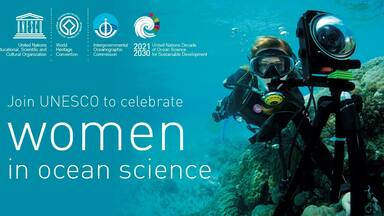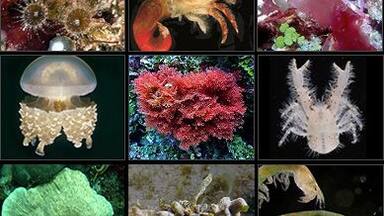World Oceans Day
How Marine World Heritage builds resilience
for people and nature
Spread across 37 nations from the tropics to the poles, the 50 UNESCO marine World Heritage sites are among the ocean’s most productive waters. Their abundance of marine life is vital to sustain the livelihoods of indigenous communities, local businesses and artists alike.
This year’s United Nations World Oceans Day highlights the critical importance of the ocean as a source of life and livelihoods. It is this interconnectedness between nature and people that is at the heart of the 1972 World Heritage Convention. The Rock Islands Southern Lagoon (Palau) aptly exemplifies this, having been inscribed on the UNESCO World Heritage List both for its abundant coral reefs as well as the exceptional way of life of its small island community that evolved over more than three millennia.
Today, climate change threatens most of UNESCO’s marine World Heritage sites. A 2017 study revealed that all 29 UNESCO listed coral reefs are expected to bleach twice a decade by 2040, spelling disaster for the people who depend on them. In an effort to build resilience and help communities to adapt to the inevitable change, UNESCO joined an ambitious public-private partnership called the Resilient Reefs Initiative. At the heart of the initiative is the appointment of local Chief Resilience officers at each of the four pilot sites. Their role is to empower local businesses, traditional owners, and communities to build creative solutions together that will help them adapt sustainably to the changing circumstances and allowing nature and people to thrive together.
In Ningaloo Coast (Australia), one of the four pilot sites, the Resilient Reefs Initiative illustrates how the area generated over a 1,000 sustainable jobs for its local community and contributed over AU$100 million to the economy of Western Australia in 2018-19.
Similar actions are underway in Belize and New Caledonia. About 200,000 Belizeans are dependent on the World Heritage-listed reef for their livelihoods. The reef generates annually up to 15 percent of the country’s gross domestic product. Fishing and tourism are among the main sources of income for local communities, with thousands of tourists coming to Belize’s World Heritage site for its underwater wildlife spectacle. Artisanal fishing, diving activities and local tourism are also crucial for local and traditional owners at the Lagoons of New Caledonia: Reef Diversity and Associated Ecosystems (France).
The Resilient Reefs Initiative is a collaboration between the Great Barrier Reef Foundation, The Nature Conservancy’s Reef Resilience Network, Columbia University’s Center for Resilient Cities and Landscapes, Resilient Cities Catalyst, UNESCO and AECOM. The project is enabled by the BHP Foundation.












